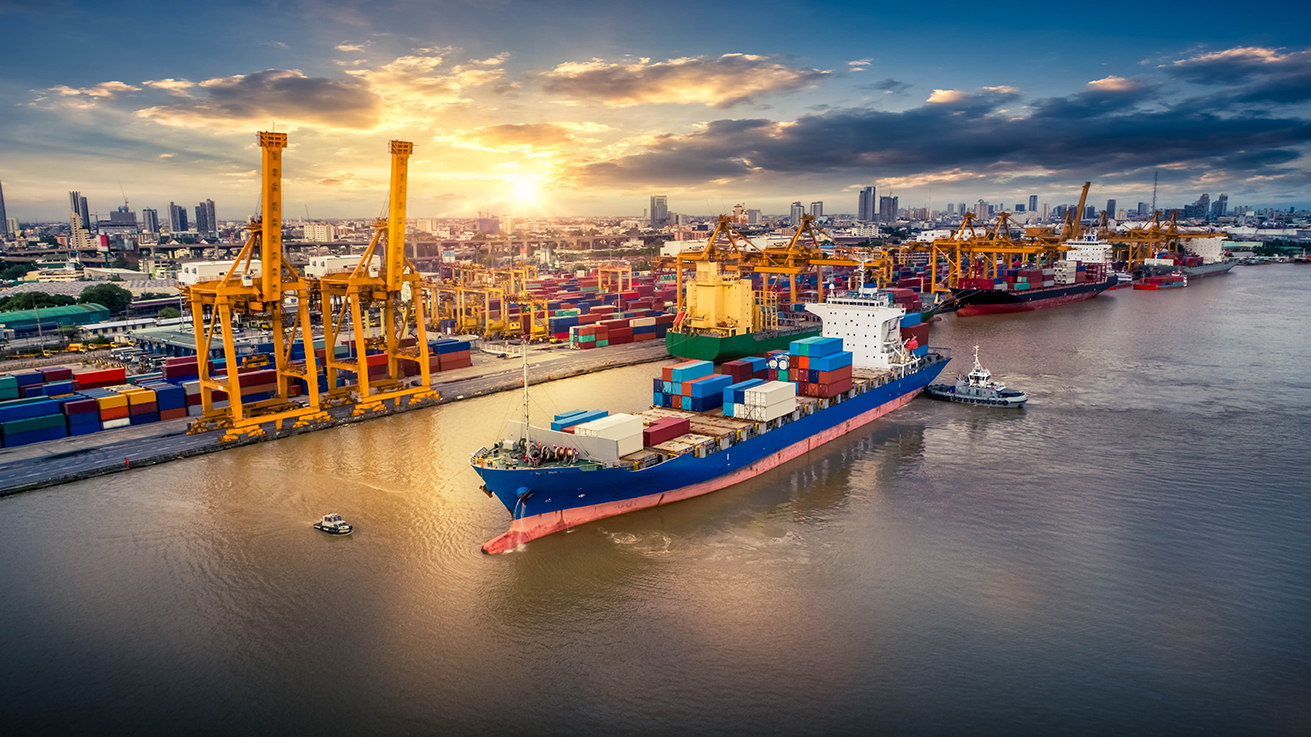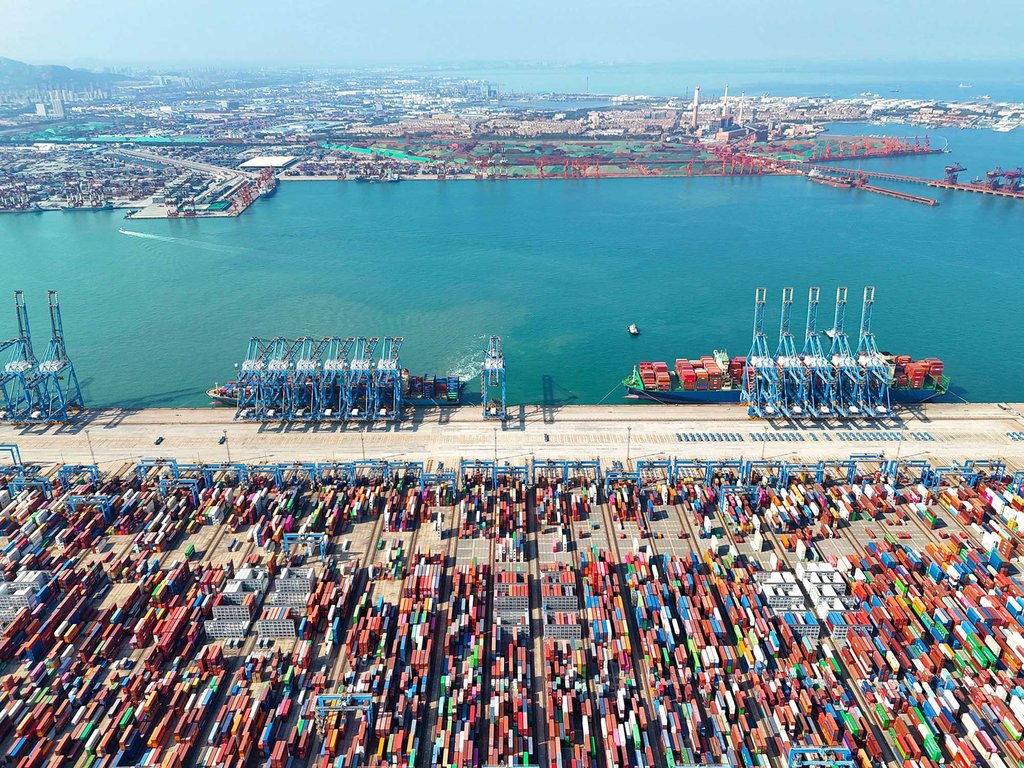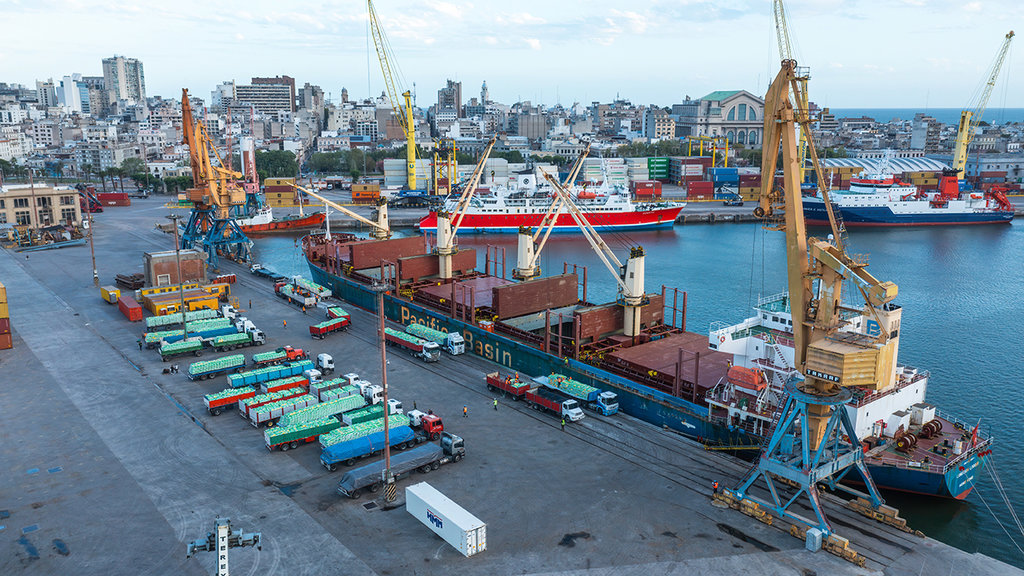Feature
New fuels and slower sailing: Can shipping ride the wave of decarbonisation?
The global shipping industry contributes about 3% to global emissions. Ashima Sharma asks: Is the industry ready to change course towards alternate fuels and electrification?

Decarbonising shipping will mean connecting to port power. Credit: Travel mania via Shutterstock
In her state of the union address, European Parliament President Ursula von der Leyen addressed the bloc’s Green Deal: “The core aim will be to support every sector in building its business model for the decarbonisation of industry.” As part of the much-praised Green Deal introduced, in 2019 the European Commission announced proposals to make the EU's climate, energy, transport and taxation policies fit for reducing net greenhouse gas emissions by at least 55% by 2030, compared to 1990 levels.
On one hand, von der Leyen made several promises for Europe’s climate neutral future on behalf of the Parliament. On the other, critics say that the Commission has not kept its promises, and that claims it has are “nothing short of hypocrisy.”
“The indefinite delays in critical legislation within these sectors are threatening the whole European Green Deal, by undermining its climate, zero-pollution and biodiversity goals,” said a member of the European Environmental Bureau, the largest European network of environmental NGOs.

Shipping lies at the centre of international industry. Credit: CFOTO/Future Publishing via Getty Images
While the EU has set ambitious targets to decarbonise the shipping industry, it lacks a roadmap to achieve these. Maritime transportation accounts for 3% of the global greenhouse gas emissions and there are few well-tested alternatives to the cheap, heavy and dirty diesel oil used by ships. Based on some estimates, if the current situation prevails, the shipping industry’s share of global emissions could be as high as 20% by 2050, compared to 3% today, as other industries decarbonise around it. Although the industry is inching towards alternative fuels, the onus now lies with the shipping industry and port operators to assess which fuel to bet on, in line with their decarbonisation goals.
Where does the shipping industry stand in decarbonisation debates?
The shipping sector has been a slow absorber of technologies that cut emissions. In July this year the International Maritime Organisation, the UN division that governs global shipping met over a fortnight of talks to discuss decarbonisation goals and a potential levy of up to $100 per tonne of carbon produced by ships. According to World Bank estimates, a carbon tax on shipping could raise as much as $50bn to $60bn a year. Following talks among 175 governments, the carbon levy was delayed, but an agreement was reached to reduce the carbon-intensity of international shipping by 40% by 2030, compared with 2008 levels.
However, this falls far short of what is needed. Talking about the decision Bryan Comer, marine programme lead at the independent non-profit the International Council on Clean Transportation (ICCT), told The Guardian, “By our estimates, international shipping will exceed its 1.5°C carbon budget by approximately 2032 under this agreement.”
By our estimates, international shipping will exceed its 1.5°C carbon budget by approximately 2032.
It is evident that decarbonisation of shipping is not only being discussed at policy level, but also being monitored on the ground by NGOs, think-tanks and environmental activists. Jonathan Moss, the Global Head of Transport Sector at legal services provider DWF, said: “So far the voices from the industry are somewhat muted in parts. The pace of technological advancement needs to quicken: the shipping, finance and technology sectors and governments must work together and commit both financial resources and skilled manpower for the projects. The compliance and regulatory framework need to encourage change and not stand in the way of companies reaching decarbonisation goals.”.
What are the current obstacles in decarbonising shipping?
The maritime industry is responsible for the transportation of over 80% of global trade. This cargo rides on the back of diesel engines, well-known to produce a colossal carbon footprint. Liquid natural gas (LNG) has been hailed as a cleaner alternative, but it is not a silver bullet. While LNG emits significantly less CO₂ and methane, its emissions are still not zero.
“Longer-term solutions such as alternative fuels will be vital for achieving the overall target of net zero, but these will take time and investment to develop to scale,” says Peter Schroder, the CEO of maritime software provider Sea.
“Another hurdle that needs to be overcome, in an industry as old as shipping, lies in breaking with long-held conventions. For example, the current approach to freight trading is to move fast and often end up waiting at busy ports. This wastes precious fuel, as ships then idle at busy ports, waiting to dock.”
Our industry is behind the curve when it comes to setting industry-wide standards for how we collect, use, and share data in our chartering workflows.
Rightly so, speed reduction has been hailed as the primary, zero-cost solution to reduce fuel consumption and subsequently emissions. Reducing shipping speeds by 10% can reduce the fuel consumption by almost 20%. This practice is known as slow-steaming or eco-speed.
Schroder also points out that “innovative software can provide immediate emissions savings. Digitising pre-fixture decision making can play a pivotal role in achieving immediate emissions reductions from vessel journeys across the globe. It’s about using data to make smarter, more efficient, and ultimately more sustainable decisions.
“However, our industry is behind the curve when it comes to setting industry-wide standards for how we collect, use, and share data in our chartering workflows. The current lack of industry-wide standards invalidates much of the non-competitive, mutually-beneficial data that could be used to improve the whole industry.”
Experimenting with onshore power supplies
When berthed, ships need electricity to support various operations like loading, unloading, lighting and other onboard activities. Traditionally, this power is provided by fuel engines that emit carbon dioxide and further affect the air quality of ports, workers and residents. As an alternative to onboard power generation, vessels can be hooked to onshore power supplies allowing operations to proceed uninterrupted, while eliminating emissions.
Currently, most ports are neither equipped to supply vessels with electricity, nor are the vessels equipped to receive power in that manner. On one hand, power grids may not be able to manage such a diversification, and on the other, different parts of the world use different electrical frequencies, so not all ships would be able to connect to certain ports.
Consideration of investment for power receiving points, power sockets and power management systems will be needed.
“Consideration of investment for power receiving points, power sockets and power management systems of older ships that were not built with these will need to be reviewed. Nevertheless, newer built ships are likely to have these systems in place, which would significantly reduce costs. There needs to be a clear desire from all ship owners and cargo owners to encourage investment and research and development,” says Moss.
"Standardisation of onshore power supply would need to be measured. No international standard is in place, so few vessels have the required technology, and many differ in voltages, frequency and technical solutions. Evidence suggests standardisation would be a viable path for ship technology, increasing installation and equipment compatibility and lower costs.

Decarbonising shipping requires global collaboration. Credit: Jouni Niskakoski via Shutterstock
"The challenges associated with onshore power supply could be addressed by government policies and strategies, including funding and subsidising the costs of electricity and electrical equipment for onshore power. Most European ports have joined environment ship indexing programmes, with 4,000 vessels globally installing environmentally friendly technologies, including shore power."
Introducing changes at policy and industry levels
While ambitious regulations for decarbonisation have been put in place globally, players in the industry say they also require a level playing field for fleets that are already using expensive alternative fuels allowing them to compete against those who are yet to move away from fossil fuels. Unlike the automobile industry’s switch to manufacturing battery electric vehicles, shipping faces challenges in scaling up operations.
“Shipping is a high-volume, low-profit industry. Furthermore, the sheer weight and distances covered by ships results in a greater challenge to overcome. Therefore, where technology currently stands, energy-dense liquid fuels seem to be the likely decarbonisation pathway for bulk/cargo carriers," says Dr Robert Moorcroft, a carbon reduction scientist at consultancy Tunley Environmental.
“As an estimate, biofuels cost 15-20% more than heavy fuel oil, however fuels such as green methanol cost significantly higher again. These costs will come down as pilot plants are scaled up. Several Canadian Great Lakes ships run on biofuels already, although we may have to wait a little longer for widespread, international adoption.”
The levy of a carbon tax has been widely discussed as an incentive for the industry to look towards decarbonisation. At the same time, government spending is required to accelerate green hydrogen technologies for shipping, as well as initial subsidies for the uptake of green fuels. Given that a ship has a lifespan of up to 30 years, today the design and engineering of these ships needs to be planned in a manner that incorporates onshore power and seamless switching to new fuels.
“Decarbonisation needs to become the favoured option,” says Moorcroft, and most often this falls back to a company’s bottom line.